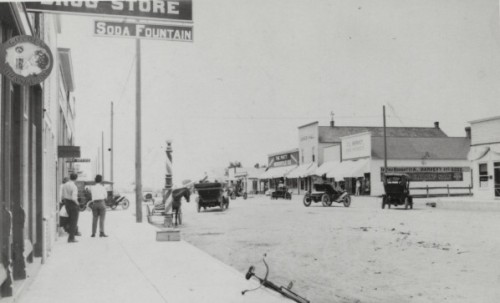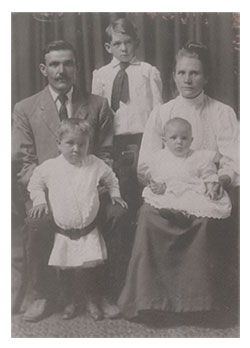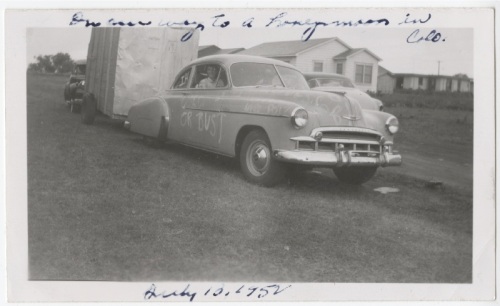by Lesley Drayton, Curator, Local History Archive
The Fort Collins Local History Archive has hundreds of interesting oral histories in the collection, the bulk of which were recorded in the mid to late 1970s by community volunteers eager to capture the stories of many of Fort Collins citizens who had witnessed the many changes in the city from the turn of the 20th century on up to the nation’s bicentennial.
One especially compelling oral history was recorded by Jill Boice in the summer of 1974 when she listened to the many fascinating stories told by Ellen Michaud, a retired nurse who had come to Fort Collins at the age of 14 in 1909.
Some of Ms. Michaud’s more humorous memories involve early driving habits in Fort Collins:
“Well, my father owned a car in 1916, a Ford. And that’s when I learned to drive a car…I taught myself. I just simply went out. And first I tried backing it up, and driving it up, backing it up, and driving it up. And then I got real brave and I drove it around the block…
A lot of people thought [cars] were useless…for a long, long number of years there was horses and buggies and cars…and people just drove wherever they wanted to. You drove up, well on College Avenue, you just drove, that’s all. And streetcars run down the middle of it—and you usually would drive on the right hand side. And then you could go to the corner or you could turn around in the middle of the street; it didn’t make a bit of difference…there wasn’t so much traffic then. And you could just come and go as you please.”
Do you remember your first driving experiences?






 Our last story from the inaugural
Our last story from the inaugural 

 This week’s story from the
This week’s story from the 



You must be logged in to post a comment.